Let’s discuss important matters.
Food is a big component of national pride in Mexico. Nationalism is a sticky topic that should ruin no food post, but let’s leave it at this: the foods below are a much louder cry of ‘Viva México’ than the one a half-engaged audience can deliver when the Presidents does the protocolary celebrations on Independence Day. There ain’t no tequila ocean big enough to fuel the needed social beast to make homesick Mexiexpats think of anything beyond food when ‘Viva México’ is uttered.
We’ve talked Independence Day comfort food already. Last year, I took you to my grandma’s kitchen to teach you how to make tinga, the delicious chicken-in-tomato-sauce dish that makes my days brighter every time it appears on the table. This time, we should talk about pozole.
Now, there are some facts to be shared about the feast of color you could see in the picture above:
– Whereas pozole is a stew, you want to make sure you include its recipe in your ‘main dish’ and ‘superindulgent’ tabs. Underneath all those light toppings, and the shredded chicken and flavorful broth, you will find a thick layer of starchy hominy. All those calories will comfort your soul in the coldest day of this autumn.
– Whereas pozole is what you eat in the 21st century celebrations of Independence day, it is believed that this dish goes back to Prehispanic traditions. Also, though the pozole style depicted in this post is the most mainstream and easy and widely eaten one, each region will have a different recipe. I don’t recommend getting to know all the variations in one year (unless you have little regard for your health).
– Pozole is as easy as the following: cook your main ingredient in a pot (chicken, pork, mushrooms), and take it out once it’s cooked (and before it loses moisture). Add the corn, some sliced onion, and let it simmer over low heat until you are ready to serve it.
Add shredded chicken to a bowl, top it with the stew, and serve with the garnishes (which you can chop in less time than it will take for the stew to let its flavors mingle happily). For the garnishes, you will need lettuce (shredded); fresh radishes (chopped); fresh onion (chopped); dried oregano; lime juice; avocado wedges; hot salsa.
There’s something else I don’t recommend: being proud of actually getting to see the bottom of the dish you ate your pozole in.
Things I do recommend? Serving this with a healthy(?) dose of tinga, chicharrón and chiles en nogada to round out the meal into a full Mexican feast.
At my place, this meal was topped off with friendly helpings of passionfruit and guanabana sorbets.
Viva México… and vivan the body mechanisms that allowed me to survive this sugar peak long enough to post this evidence on the internet.
Links: quick recipe for pozole in English (bear in mind our version involves no cumin); step-by-step recipe for tinga de pollo, as cooked by my grandma.
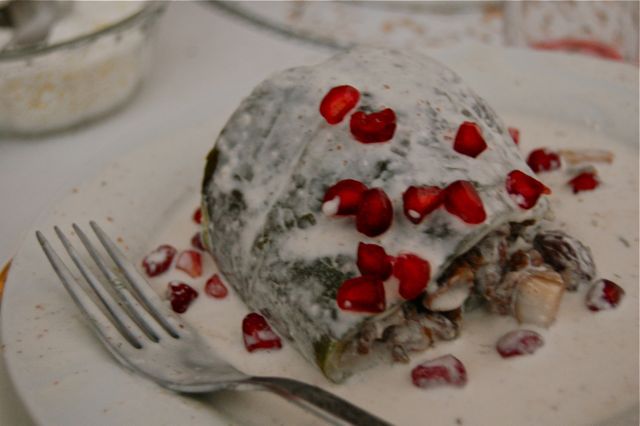

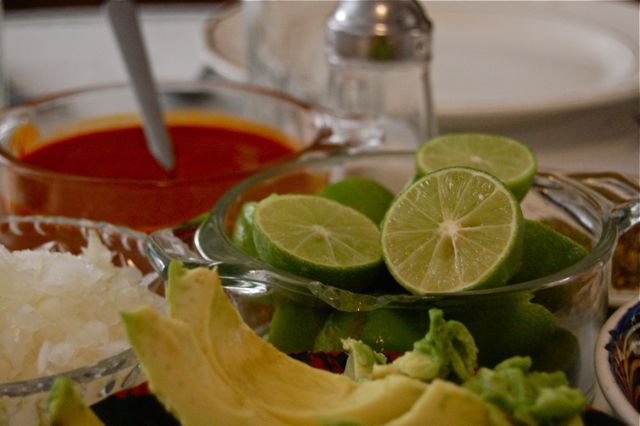
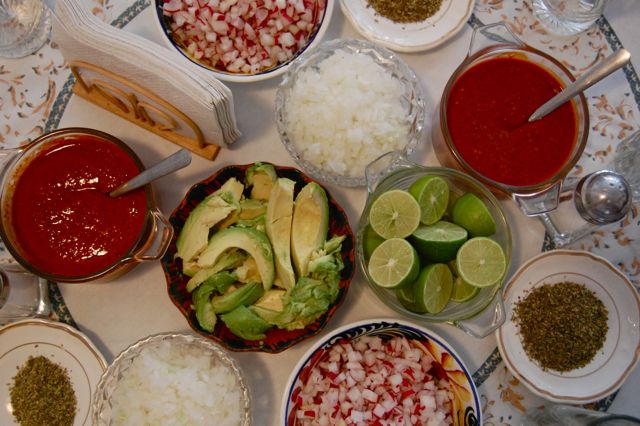
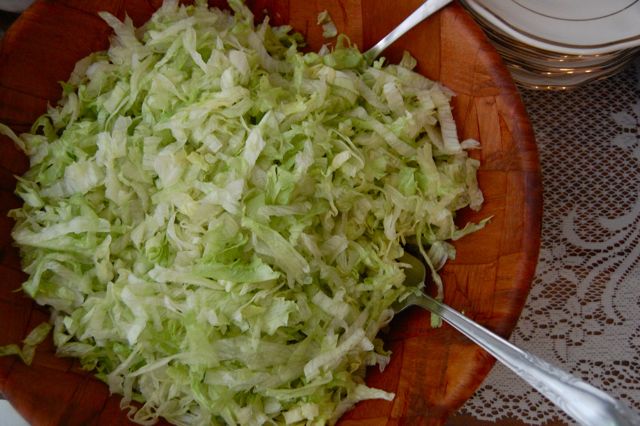
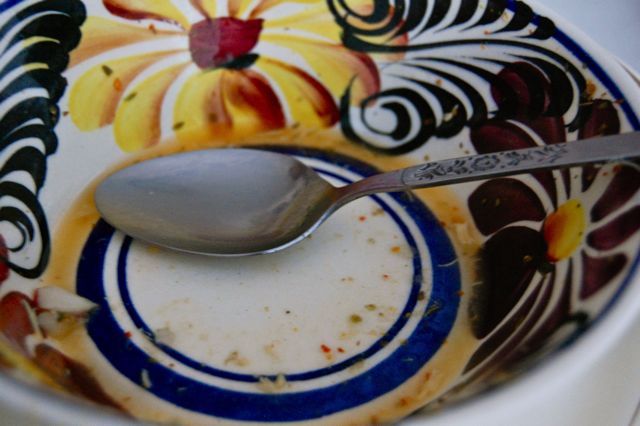
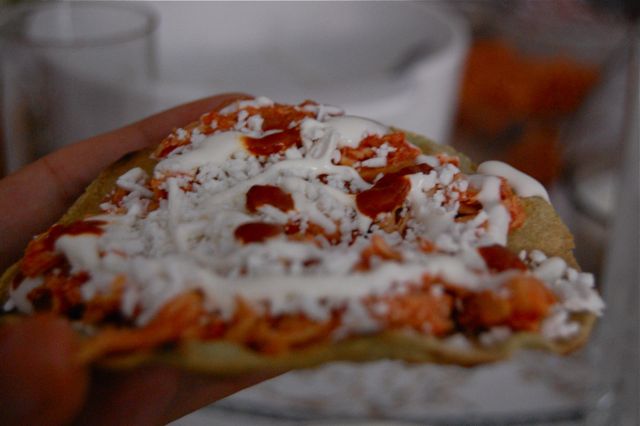


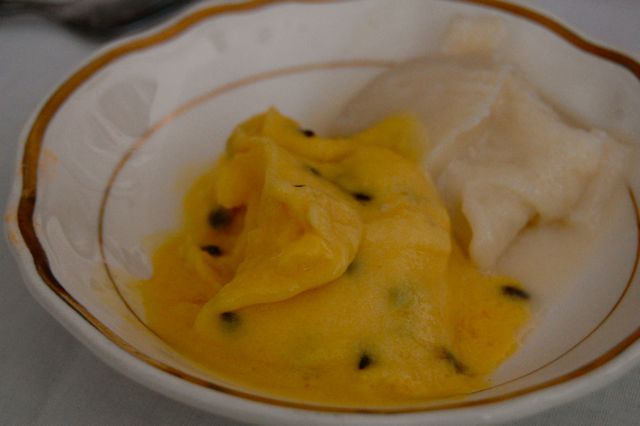
Great photos – really makes me miss y’all’s MexiFeasts. I always ate so well at the holidays. 🙂